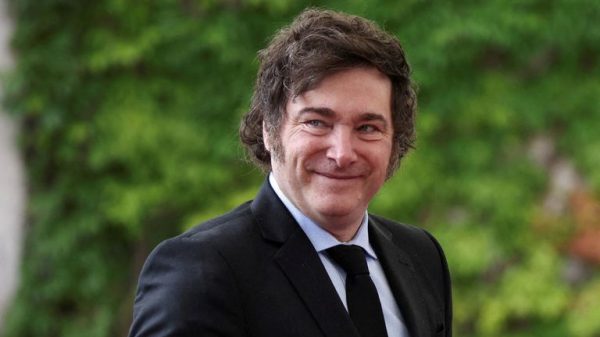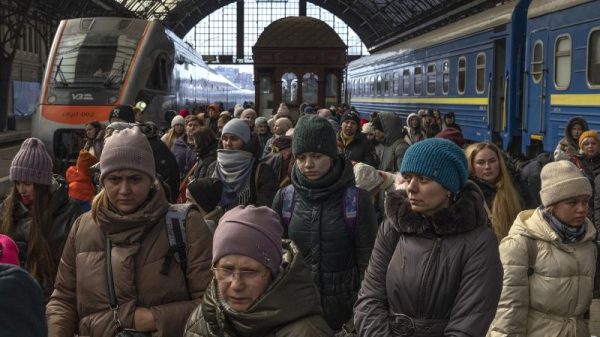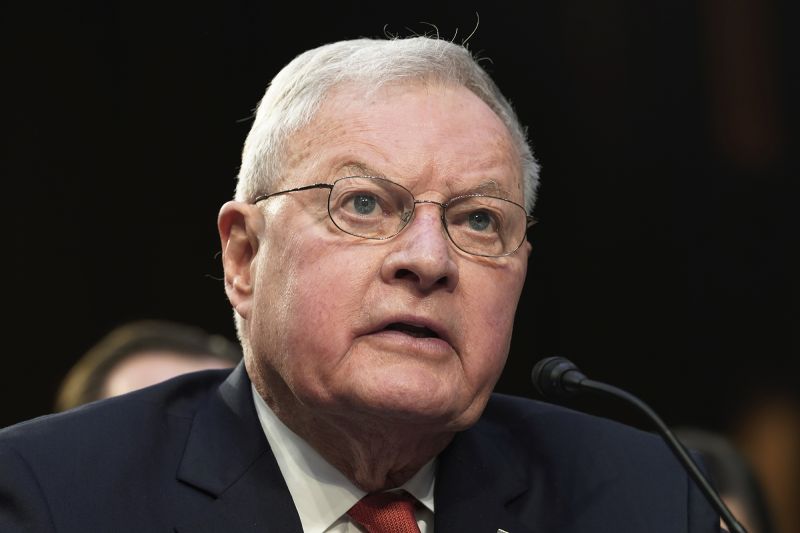In a single post, the president–elect told the world what the end of the Ukraine war might look like. And it is going to be a big diplomatic ask, to say the least.
“I am very pleased to nominate General Keith Kellogg to serve as Assistant to the President and Special Envoy for Ukraine and Russia,” Trump wrote on his Truth Social channel. “Together, we will secure PEACE THROUGH STRENGTH, and Make America, and the World, SAFE AGAIN!”
By appointing Keith Kellogg as his special envoy to Ukraine, Donald Trump has also chosen a very specific, pre-announced plan for the thorniest foreign policy issue on his plate.
Kellogg, Trump’s 80-year-old former national security advisor, has laid out his peace plan in some detail, writing for the America First policy institute in April.
It begins calling the war “an avoidable crisis that, due to the Biden Administration’s incompetent policies… has entangled America in an endless war.”
In short, a ceasefire will freeze the frontlines and both sides will be forced to the negotiating table. But it is in the longer details where it all gets complex.
Changing the US’ involvement
Kellogg spends most time berating Biden’s actions – saying that his administration gave too little lethal aid too late. He says Trump’s decision to give the first lethal aid to Ukraine in 2018 conveyed the strength needed to confront Putin, and that Trump’s soft approach to the Kremlin head – not demonizing him like Biden has – will enable him to strike a deal.
Kellogg says more weapons should have been given before the Russian invasion, and immediately afterwards, to enable Ukraine to win.
Kellogg says the United States doesn’t need involvement in another conflict, and its own stocks of weaponry have suffered from aiding Ukraine, leaving the country potentially exposed in any conflict with China over Taiwan. He says Ukraine’s NATO membership – in truth a very distant prospect, tentatively offered to Kyiv in symbolic solidarity – should be put on hold indefinitely, “in exchange for a comprehensive and verifiable peace deal with security guarantees.”
Foremost, the plan says it should become “a formal US policy to seek a ceasefire and negotiated settlement.”
It says future US aid – likely given as a loan – will be conditioned on Ukraine negotiating with Russia, and the US will arm Ukraine to the extent it can defend itself and stop any further Russian advances before and after any peace deal. This latter suggestion is perhaps dated by the fast Moscow advance underway in eastern Ukraine and the current high US level of aid already makes Kellogg uncomfortable.
Kellogg credits partially a 2023 article by Richard Haas and Charles Kupchan for some of the next ideas.
A freeze to the frontlines
The frontlines would be frozen by a ceasefire, and a demilitarized zone imposed. For agreeing to this, Russia would get limited sanctions relief, and full relief only when a peace deal is signed that is to Ukraine’s liking. A levy on Russian energy exports would pay for Ukraine’s reconstruction. Ukraine would not be asked to give up on reclaiming occupied territory, but it would agree to pursue it through diplomacy alone. It accepts “this would require a future diplomatic breakthrough which probably will not occur before Putin leaves office.”
It is fetchingly simple and swift in its approach. But it lacks an accommodation of what Moscow will demand and has used the diplomatic process for in the past: To cynically pursue military advances. The freezing of the frontlines will precipitate a very violent few months ahead as Moscow seeks to take as much ground as it can. The Kremlin has in the past ignored ceasefires and pursued its territorial objectives – often blankly denying that it is.
A demilitarized zone would likely need to be policed, possibly putting NATO troops, or soldiers from other non-aligned nations, in between the two sides. That will be hard to maintain and staff, to say the least. It would be enormous, spanning hundreds of miles of border, and a massive financial investment.
Arming Ukraine to the extent it can stop present and future Russian advances will also be tough. The plan notes the United States manufactures 14,000 155 artillery rounds a month, which Ukraine can use up in just 48 hours. Paradoxically, Kellogg wants the US to arm Ukraine more, yet also accepts they really can’t.
A change in values
Two lines provide a wider insight into the author’s thinking. He says that national security, the American First way, was about practical necessities.
“Biden replaced the Trump approach with a liberal internationalist one that promoted Western values, human rights, and democracy,” he writes. That is a pretty grim base from which to build a compromise on European security.
He adds that some critics of continued aid to Ukraine – in which he seems to include himself – are “worried about whether America’s vital strategic interests are at stake in the Ukraine War, the potential of the involvement of US military forces and whether America is engaged in a proxy war with Russia that could escalate into a nuclear conflict.”
These two sentences provide the ultimate backdrop for the deal proposed: That Ukraine’s war is about values we don’t need to perpetuate, and we should step back from Putin’s nuclear threat. It is the opposite of the current unity in which the West prioritizes the values of its own way of life and security, based on the lesson of the Thirties that appeased dictators don’t stop.
The plan presents Ukraine with a welcome chance for an end to the violence, at a time when it is losing on all fronts, and darkly short of basic manpower – a hurdle it may never overcome, and something in which Russia will likely always outpace it.
But it begins a process in which a wily and deceitful Putin will revel. Exploiting a ceasefire and Western weakness is his forte, the moment he has been waiting nearly three years for. The plan accepts Western fatigue, that its armament production cannot keep pace, and that its values are wasteful. It also makes little accommodation for what Russia will do to upset its vision.
It is a bleak compromise for a bleak war. But it may not end it and instead open a new chapter where Western unity and support begins to crumble, and Putin edges, both at the negotiating table and at the front, closer towards his goals.



























